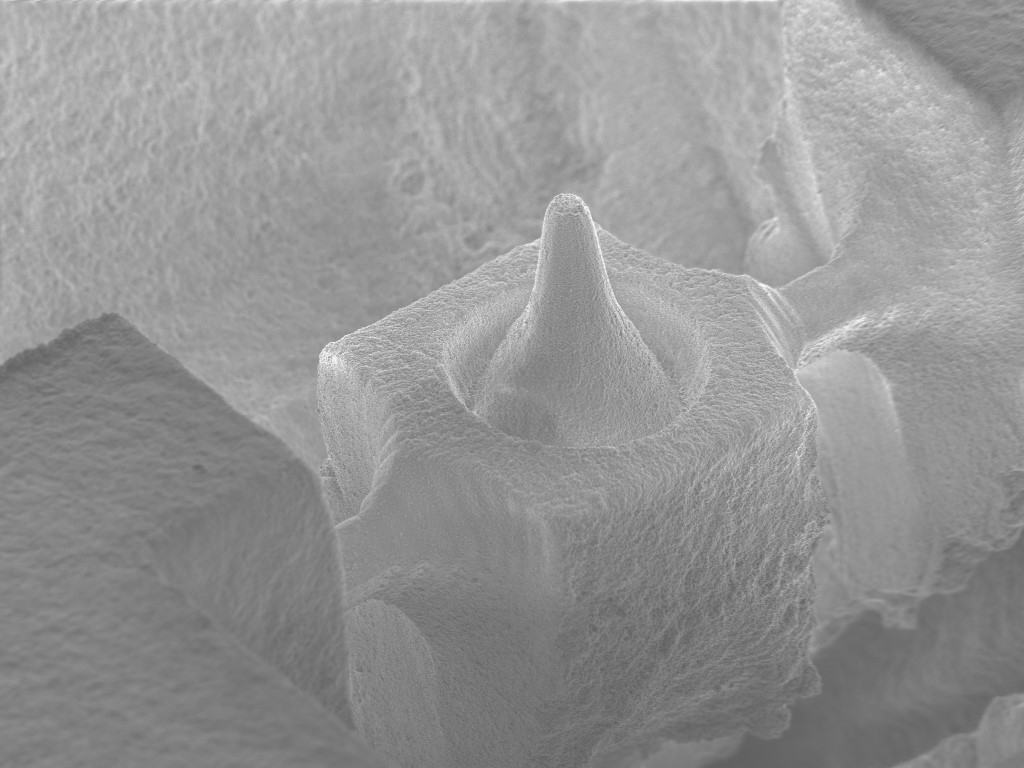Access to high-resolution, three-dimensional structural data opens up entirely new possibilities not only in terms of design, but also in terms of evaluating the reliability of materials and systems. For this reason, various methods for high-resolution 3D structural analysis are used at Fraunhofer IMWS and new workflows are being developed to implement them in the field of process development or failure analysis. One of the key areas we focus on are high-performance sample preparation methods that are adapted to the requirements of analytical techniques.

Recently, research work in the Business Unit “Optical Materials and Technologies” concerned laser-based preparation of samples for high-resolution X-ray computed tomography (nano-CT) and atom probe tomography (APT). Both techniques share the requirement for minimally invasive, precise and artifact-free production of rotationally symmetric target volumes. In the case of nano-CT, these need to be in the range of less than ten micrometers, depending on the material and diameter, tips with diameters smaller than 100 nm are required for the analysis using APT. To extract these from any given component, various preparation techniques need to be closely dovetailed. The transition between the mechanical preparation methods and the focused ion beam (FIB) technique is particularly challenging. To improve the reproducibility and automation of this process on the one hand, and to also significantly reduce the time required for final thinning by means of FIB, we have developed workflows using ultrashort pulse lasers and have incorporated them into the functional scope of the microPREP™ PRO co-developed at the institute for routine use. As a result, samples can be prepared and analyzed in a highly efficient way without any final FIB preparation, even in the case of very challenging materials, such as glass and glass ceramics (see figure).
Furthermore, we have developed an innovative process for sample preparation for APT. Tip arrays can thus be automatically pre-prepared directly from the mechanically pre-tailored material volume. The conventional FIB-based process of transferring samples onto special sample carriers is thus obsolete. At the same time, the time required for final thinning can be kept to a minimum.